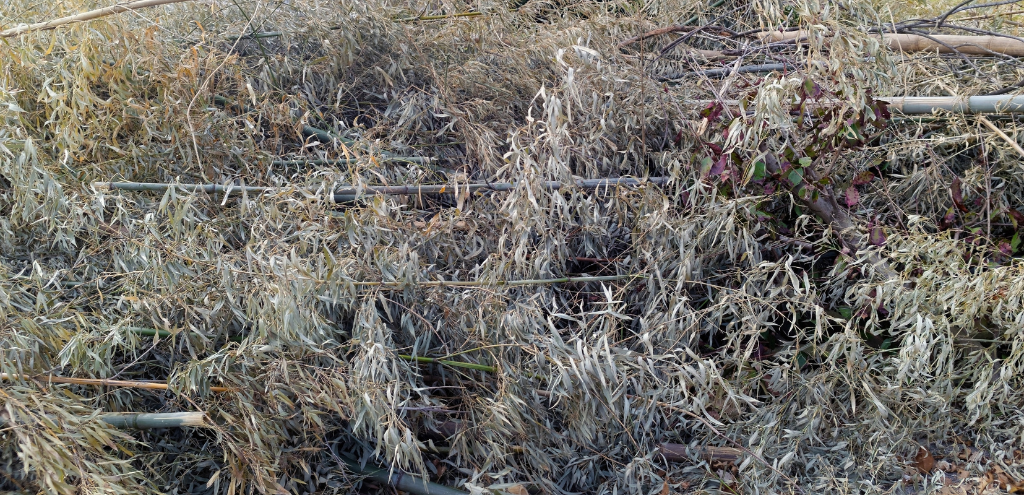THE LEAFLET

Most UN-Wanted: Bamboo
Casey Trees’ most unwanted invasive plant species series ends this week with one final highly problematic, tree-harming plant: Bamboo. Thought to be a tree by many, Bamboo is technically a grass. First introduced to the United States in the late 19th century, Bamboo was a common choice for property owners to create barriers between yards. Today, bamboo is still being sold as an ornamental plant advertised for its ability to spread quickly and help erosion. Unsurprisingly, the species spreading abilities is what makes it so invasive, with many parts of the United States now advising against planting it, and some counties, like our neighbor Fairfax, Virginia, enforcing homeowners to contain the spread of their bamboo.
There are various types of bamboo present in the United States, with running bamboos being highly invasive with their underground stems, called rhizomes, growing up to 15 feet per year. The most common running bamboos include: Golden Bamboo (Phyllosatchy aurea), Japanese Timber Bamboo (Phyllostachys bambusoides), Common Bamboo (Bambusa vulgaris), and Arrow Bamboo (Pseudosasa japonica). Mature patches of running bamboo take over open and forested environments with rhizomes able to grow indefinitely unless damaged. The spread of these running bamboos deteriorates forests and takes resources from native plants, eventually crowding all native species out. Also, running bamboo harms our green spaces and spreads through infrastructure such as brickwork, drains, and concrete.
How to spot Bamboo:
Bamboo can be spotted by its jointed canes that measure one to six inches in diameter. These canes vary in color from “golden” green, dark green and black. Running bamboos range in height from 40 to 75 feet. The elongated oval shaped leaves on running bamboo grow in clusters with leaves ranging from 3-10 inches in length.
How to remove Bamboo:
The number one way to prevent the spread of running bamboo in the DMV is by not planting it. There are no biological controls for bamboo at this time as the DC pandas have been returned to China. All panda jokes aside, if you are already facing a bamboo infestation, there are ways to limit its impact on your property.
Bamboo removal is almost impossible unless it is completely dug out with no remaining rhizomes to produce canes. It is suggested that there be constant maintenance to prevent spreading. During March and May, Bamboo will produce new canes. These canes are easily removable; however, the longer they grow, the stronger they become, requiring heavier tools that can withstand cutting through their woody structures. This method does not prevent rhizomes from spreading but will slow the process down. When removing, make sure to wear long sleeves and pants along with protective gloves to ensure protection from other plants such as poison ivy.
Removing rhizomes by hand is difficult with mature patches needing small excavators to dig out existing plants. If your bamboo is new or young it is recommended to dig a trench to see where all rhizomes are located and then removing them with an ax. Do not leave any remaining rhizomes as they can resprout the following season.
Over these past few weeks, we have covered the top invasive species in the DMV including: English Ivy, Porcelain Berry, Bush Honeysuckle, and Kudzu. These are invasive plant species our staff encounter most in the field. Invasive species are one of our urban forest’s largest threats. These non-native plants cause stress and environmental harm as they lack natural predators and competition.
Casey Trees continues to work with partners to remove invasive species from sites throughout the DMV. Join us in continuing the fight against invasive species by following these steps to remove bamboo in your own yard. Additionally, join us for our upcoming invasive removals that take place during our winter and summer tree care seasons.


